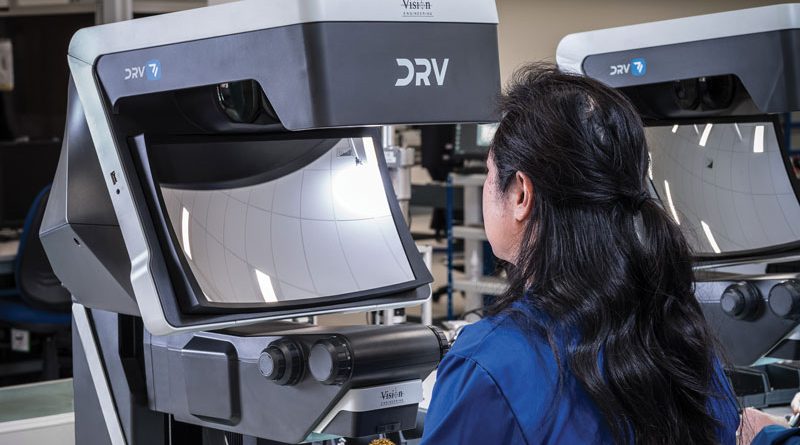For a 3D Quality Control
Vision Engineering presented in Milan DRV-Z1, the 3D stereo digital visualizer: widescreen display, 4 million pixel per image, ergonomic design, live and simultaneous sharing, even wireless. All of this without any need for glasses or viewers
by Claudia Dagrada
During a press conference in Milan organized at the end of September, Vision Engineering Italia introduced to the local market DRV-Z1: journalists present could therefore see in action this 3D stereo digital visualizer, designed for industrial quality control. The English company, specializing in technologies for visual inspection and measurement, launched the instrument internationally during the past Control trade show in Stuttgart.
The properties of this new solution were detailed by Michelangelo Prendin, General Manager – Italy & Middle East, and Phillip Townend, Group Marketing Manager. DRV-Z1 is equipped with patented technology TriTeQ3, and provides operators with a natural vision in Full HD resolution with a widescreen display. The clarity of the object being examined is excellent, with a real perception of depth. All of this without having to wear polarized glasses or a VR viewer.
Interconnection with colleagues or clients in different places
Patented technology TriTeQ3 DRV-Z1, which combines in a single system the benefits of stereoscopic optical microscopy and of digital technology, offers many advantages.
First of all, enlarged high definition 3D may be viewed without using a flat screen. Besides, by connecting more DVR systems by means of cabled or wireless technologies, users may share and process 3D photos and videos of components, parts or products in real time and simultaneously. In this way clients, manufacturers, designers and suppliers may act remotely from different sites, such as, company departments or offices found in other countries. A “digital twinning” therefore ensues: the same information is available wherever one may be. This facilitates a clear and efficient communication in the entire distribution network, and greater speed in the decision-making process.
Images and videos may be acquired and saved for documentation, distribution, reporting and filing purposes. DRV-Z1 is therefore perfectly integrated as regards the properties which instruments should have in the age of 4.0. It supports various data inputs and images, and it is compatible with microscopes, cameras, CAD and MNR/CAT scanners, and immersion images even for VR viewers.
Ergonomics and simplicity without glasses or viewers
Regarding design, Vision Engineering has always concentrated on the ergonomics of its solutions, to face issues such as operator fatigue, especially eye tiredness, which reduce efficiency and productivity. Even DRV-Z1, of course, is aligned with this corporate philosophy.
The fact that it is not necessary to wear special glasses or VR viewers allows the operator to be always in touch with external stimuli and to interact with the surrounding environment. This decreases sensory isolation, attention levels remain high, eye-hand coordination (which is crucial for precision operations) improves and so does the use of utensils on the workbench. Besides, the head can move more freely, and eyeglasses may be worn if necessary. Another key aspect is user-friendliness: DRV-Z1 just requires a speedy configuration, with commands designed for maximum efficiency and comfort, suitable even for less expert users. The need for training is therefore reduced to a minimum.
Ideal for sectors requiring high quality control standards
Thanks to great enlargements and large working distances (from 13 to 16 cm depending upon the lenses used), DRV-Z1 is suitable for many industrial uses. The system is designed to satisfy the important requisites of quality control and production in many segments, from aerospace to electronics, from safety to polymers. The domains where it is most widely used on account of the depth of its controls are especially the automotive industry (for specific components such as those of the braking system, for instance) the medical sector (for such devices as pacemakers, heart stents and more) and luxury goods (jewels, watches and so on). Among typical industrial applications, besides quality control, the ones which stand out are: polishing/refinishing, bonding, approval/liability testing, welding, aligning/positioning, etching/marking, dissection/cuts.

